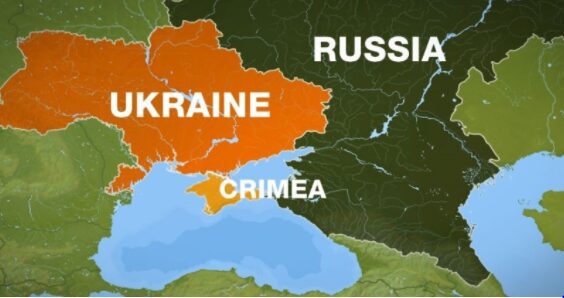
What Putin Might Want from Ukraine
February 14, 2022
The reportedly imminent invasion of the Ukraine by Russia has made for some makeshift diplomacy and worried markets. No one really knows Putin’s objectives. Perhaps he is setting the stage for a large-scale land and amphibious invasion. Alternatively, he may have no invasion plans and is seeking to use the buildup of forces as a bargaining tool. Putin’s annexation of the Crimea in 2014 has already given him a chunk of the Ukraine, including the strategic port of Sevastopol. Whatever Putin’s strategy he must have energy in mind.
About 35% of European gas consumption is imported from Russia via four pipeline networks:
- The biggest and oldest pipeline network is the Ukrainian Brotherhood which supplies 80% of Europe’s gas imports. Brotherhood pipelines can move approximately 151 billion cubic meters of gas each year, but this system is currently running at less than 30% of capacity.
- A second system, Yamal-Europe, was completed in 2006. It provides approximately 32bcm/year of gas to Germany via Belarus and Poland. Yamal-Europe was the first pipeline infrastructure developed outside of Ukraine.
- The initial phase of the third system, Nord Stream 1, was completed in 2021 and runs underwater across the Baltic Sea. It now provides 55bcm/year of gas directly to Germany. Most recently Russia completed the second phase, Nord Stream 2, which runs adjacent to NS 1. This system is awaiting European “certification” to become operational. The delay in certification has become highly contentious with Russia.
- The fourth pipeline network is called TurkStream. It runs across the Black Sea to Turkey and provides 32 bcm/year of gas to Southern and Southeastern Europe via Greece and Italy.
As part of the escalated tensions, Russia has deliberately reduced natural gas supplies across Europe. The result has been significantly higher natural prices for Europeans. In December 2021, gas prices reached $38 per MMBtu compared with a more typical winter gas price of around $5-$7 USD. Prices have eased slightly down to $28, but Europeans remain very concerned about the cost and stability of supply if a war breaks out in Ukraine.
As a side note, Russia’s state-owned gas provider, Gazprom, does not mention using Ukrainian pipelines on its website. This is probably indicative of how the Russians view their mutual energy relationship with Ukraine. Gazprom and Ukraine’s state-owned gas company, Naftogaz, have a gas contract agreement thru 2024. The outlook for the renewal of that contract does not look good.
Should Russia military forces choose to invade Ukraine, European and NATO leaders will impose severe economic sanctions. Sanctions placed on Russia could lead Russia to retaliate by shutting off all gas destined for Europe. Russia’s has built up substantial hard currency reserves so Putin may feel the Europeans’ need for gas is stronger than his need for gas sales. I hope Putin is using a Ukrainian standoff as negotiating tool to get NS 2 flowing and further diminish Ukraine’s influence. Only time will tell if Putin is bluffing or readying his forces for war.
Gary B. Martin

